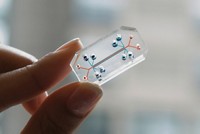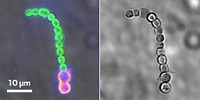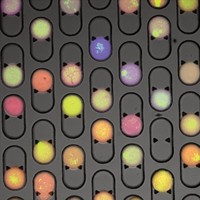Advertisement
Grab your lab coat. Let's get started
Welcome!
Welcome!
Create an account below to get 6 C&EN articles per month, receive newsletters and more - all free.
It seems this is your first time logging in online. Please enter the following information to continue.
As an ACS member you automatically get access to this site. All we need is few more details to create your reading experience.
Not you? Sign in with a different account.
Not you? Sign in with a different account.
ERROR 1
ERROR 1
ERROR 2
ERROR 2
ERROR 2
ERROR 2
ERROR 2
Password and Confirm password must match.
If you have an ACS member number, please enter it here so we can link this account to your membership. (optional)
ERROR 2
ACS values your privacy. By submitting your information, you are gaining access to C&EN and subscribing to our weekly newsletter. We use the information you provide to make your reading experience better, and we will never sell your data to third party members.
Materials
Carbon Nanotubes Spur Plant Cell Growth
Nanomaterials: Multiwalled nanotubes could improve production in bioreactors based on plant cells, researchers say
by Katherine Bourzac
March 6, 2012

Tobacco cells exposed to multiwalled carbon nanotubes overexpress genes associated with plant growth, researchers report (ACS Nano, DOI: 10.1021/nn204643g). These exposed cells outgrow untreated cells by as much as 64%.
In 2009, Mariya Khodakovskaya, a biotechnology expert at the University of Arkansas, Little Rock, and her colleagues found that multiwalled carbon nanotubes dramatically enhanced growth rates in tomato plants (ACS Nano, DOI: 10.1021/nn900887m). This observation raised the possibility of using the nanomaterials as fertilizers. But, says Khodakovskaya, “if we want to use carbon nanotubes as a fertilizer, we have to understand the mechanism of these positive effects and study the potential risks in detail.”
To start to piece together the molecular mechanism behind their observations, the Arkansas researchers grew cells of tobacco plants, which are a commonly studied plant in the lab, in growth media containing varying concentrations of multiwalled carbon nanotubes or activated carbon. They then compared the cells to ones grown without either carbon material. They measured cell growth rates and expression levels of three growth-associated genes.
As they found in previous studies, the researchers saw that activated carbon increased cell growth rates by 16% at a low concentration of 5 µg/mL. Meanwhile, multiwalled nanotubes increased growth by 55 to 64% over a range of concentrations from 5 to 500 µg/mL. The researchers found that, in the cells grown with nanotubes, expression spiked of all three genes they studied: ones associated with cell division, cell wall formation, and water transport. For example, expression of cycB, a gene that regulates the cell cycle, increased 35-fold in cells exposed to 100 µg/mL of the nanotubes.
Khodakovskaya says it is still too soon to harness these growth-promoting effects by using nanotubes as agricultural fertilizer: Scientists still need to understand how nanotubes and other nanomaterials move through the environment, she says, and how they might accumulate as they move up the food chain (C&EN, Mar. 14, 2011, page 44-46). A potential near-term application, which her group is exploring, would be to use the multiwalled nanotubes to improve production rates in bioreactors that use tobacco cells to make pharmaceuticals and other products.
Tatsiana Ratnikova, a horticulture and physics researcher at Cornell University, cautions against making generalizations based on the study. “We have to study each type of plant, each nanoparticle,” she says. The picture is not yet clear even for multiwalled carbon nanotubes, she says, in part because their diameter, length, and number of layers vary widely. In fact, some studies on the materials have found decreased growth, she says, while other groups reported no effects at all.





Join the conversation
Contact the reporter
Submit a Letter to the Editor for publication
Engage with us on Twitter